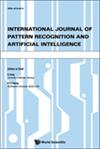Cross-Modal Interaction Network for Video Moment Retrieval
IF 1.1
4区 计算机科学
Q4 COMPUTER SCIENCE, ARTIFICIAL INTELLIGENCE
International Journal of Pattern Recognition and Artificial Intelligence
Pub Date : 2023-07-06
DOI:10.1142/s0218001423550108
引用次数: 0
Abstract
The video moment retrieval task aims to fetch a target moment in an untrimmed video, which best matches the semantics of a sentence query. Existing methods mainly focus on utilizing two separate modules: one learns intra-modal relations to understand video and query contents, and the other explores inter-modal interactions to build a semantic bridge between video and language. However, intra-modal relations information can be easily overlooked when capturing inter-modal interactions. In fact, intra-modal relations and inter-modal interactions can be learned simultaneously within a unified module to make video and sentence guide each other. Towards this end, we propose a Cross-Modal Interaction Network (CMIN) for video moment retrieval by jointly exploring the intra-modal relations and inter-modal interactions between video frames and query words. In CMIN, a query-guided channel attention module is designed to suppress query-irrelevant visual features and enhance crucial contents; then a cross-attention module simultaneously considers intra-modal relations within each modality and fine-grained inter-modal interactions between frames and words, to enhance the semantic relevance between video and sentence query. Compared to the state-of-the-art methods, the experiments on two public datasets (Charades-STA and TACoS) demonstrate the superiority of our method.视频矩检索的跨模态交互网络
视频时刻检索任务的目的是在未修剪的视频中获取与句子查询语义最匹配的目标时刻。现有的方法主要集中在利用两个独立的模块:一个学习模态内关系来理解视频和查询内容,另一个探索模态间交互,在视频和语言之间建立语义桥梁。然而,在捕获多式联运交互时,很容易忽略多式联运关系信息。实际上,在一个统一的模块中,可以同时学习模态内关系和模态间互动,使视频和句子相互引导。为此,我们提出了一个跨模态交互网络(CMIN),通过共同探索视频帧和查询词之间的模态内关系和模态间的交互作用来进行视频时刻检索。在CMIN中,设计了一个以查询为导向的通道注意模块,以抑制与查询无关的视觉特征,增强关键内容;然后,交叉注意模块同时考虑每个情态内部的情态关系以及帧和单词之间的细粒度情态间交互,以增强视频与句子查询之间的语义相关性。通过在两个公开数据集(Charades-STA和TACoS)上的实验,验证了该方法的优越性。
本文章由计算机程序翻译,如有差异,请以英文原文为准。
求助全文
约1分钟内获得全文
求助全文
来源期刊
CiteScore
2.90
自引率
13.30%
发文量
201
审稿时长
15.8 months
期刊介绍:
The International Journal of Pattern Recognition and Artificial Intelligence (IJPRAI) welcomes both theory-oriented and innovative applications articles on new developments and is of interest to both researchers in academia and industry.
The current scope of this journal includes:
• Pattern Recognition
• Machine Learning
• Deep Learning
• Document Analysis
• Image Processing
• Signal Processing
• Computer Vision
• Biometrics
• Biomedical Image Analysis
• Artificial Intelligence
In addition to regular papers describing original research work, survey articles on timely and important research topics are highly welcome. Special issues with focused topics within the scope of this journal are also published.

 求助内容:
求助内容: 应助结果提醒方式:
应助结果提醒方式:


